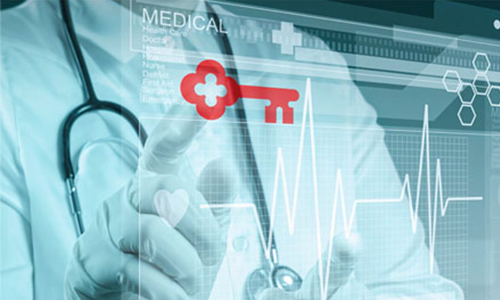Cybersecurity for Medical Device Endpoints
January 29, 2018
Source: WIBU Systems
 992
992

With the recent, highly publicized incidents of identity theft, ransomware and malware attacks directed at healthcare facilities, the medical device community is on high-security alert. Cybersecurity exploits have resulted in the theft of patient data, intrusions to hospital IT networks, and malicious manipulation of medical devices and systems connected to these networks. The consequences of these attacks are potentially catastrophic: personal identity theft, disruption of critical hospital services, and an overall threat to patient privacy, care and safety. No one in the medical device community would argue that there is an urgent need to secure medical systems, devices and data.
Government organizations, like the FDA and National Institute for Standards and Technology (NIST), are now giving more attention to cybersecurity in the medical area as well.
The US FDA recently published recommendations for both manufacturers and regulators to address medical device cybersecurity. The document, Postmarket Management of Cybersecurity in Medical Devices: Guidance for Industry and Food and Drug Administration Staff, encourages manufacturers to address cybersecurity throughout the product lifecycle, including during the design, development, production, distribution, deployment and maintenance of the device.
Updated guidelines from NIST include specific updates regarding cybersecurity metrics and considerations about supply chain risk management and common terminology used to communicate with outside partners and vendors.
Industry organizations, including the Industrial Internet Consortium (IIC), are involved as well. Earlier in 2016, the IIC released its Industrial Internet Security Framework (IISF) document that identified endpoint vulnerabilities, many of which are prevalent in medical network environments and ways to protect against them.
Security Considerations for Medical Device Endpoints
An endpoint device includes any computer-based device or system that is Internet-enabled and connected to an IP network. In the medical area, endpoints can be surgery robots, X-ray machines, MRI scanners, dental devices, infusion pumps, patient monitors or any other medical equipment with a computer chip and connection to the Internet. Security experts consider endpoints to be most vulnerable to hackers, particularly in the healthcare environment. Securing medical device endpoints involves many aspects:
- physical security to prevent uncontrolled changes to or the removal of the endpoint
- root of trust to provide confidence on the endpoint identity
- integrity protection to ensure that the endpoint is in the configuration that enables it to perform its functions predictably
- access control to ensure that proper identification, authentication and authorization protocols are performed
- secure configuration and management to control updates of security policies and settings
- monitoring and analysis for integrity checking, detecting malicious usage patterns or denial of service activities, and enforcing security policies and analytics
- data protection to control data integrity, confidentiality and availability
- security model and policy for governing the implementation of security functions
Integrity Protection
The term “Integrity Protection” encompasses security measures, namely protection of system resources, programs and data against unauthorized manipulation, or at least identification and display of such modifications. The challenge consists in guaranteeing data integrity, and, if not possible, bringing the system to a safe mode and stopping the execution of any function. The best integrity protection solutions are based on cryptography and associated security mechanisms, such as digital signatures and message authentication.
Secure Boot
Secure Boot functionality utilizes a digital certificate-based chain of trust to help prevent malicious software applications from loading during the system start-up process.
These are just a few examples of security measures that developers have available to ensure the proper use and performance of the medical device in a healthcare setting.
By DduRead more on
- 【EXPERT Q&A】What are the regulations and requirements for exporting medical devices to the European Union? September 5, 2023
- 【EXPERT Q&A】What is the procedure for registering medical devices for the Russian market? August 22, 2023
- Disposable Medical Products that Keep Your Medical Facility Clean and Sterile March 31, 2022
- Things to Know before Buying Newborn Baby Incubators March 31, 2022
- 10 Triumphant Drug Launches Of The Decade August 26, 2021
your submission has already been received.
OK
Subscribe
Please enter a valid Email address!
Submit
The most relevant industry news & insight will be sent to you every two weeks.



